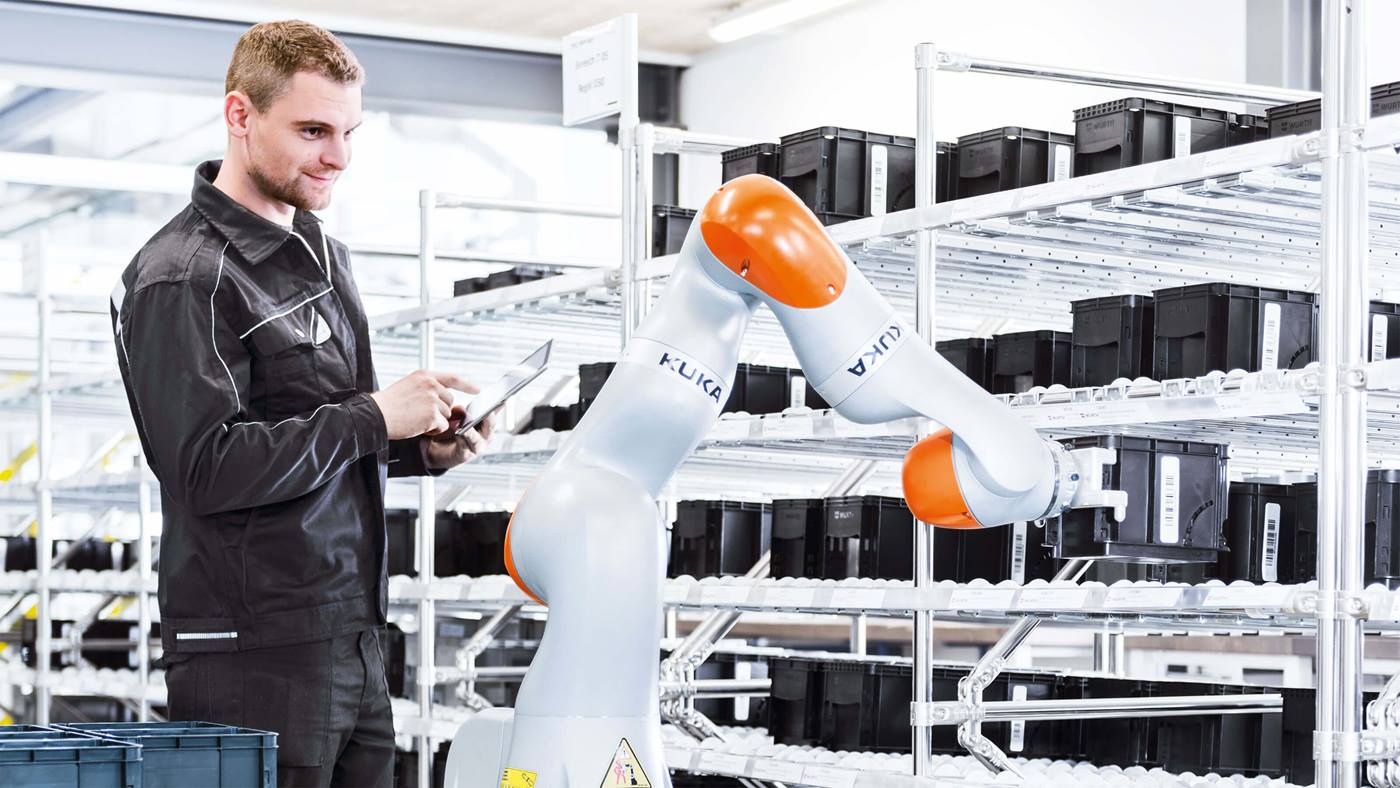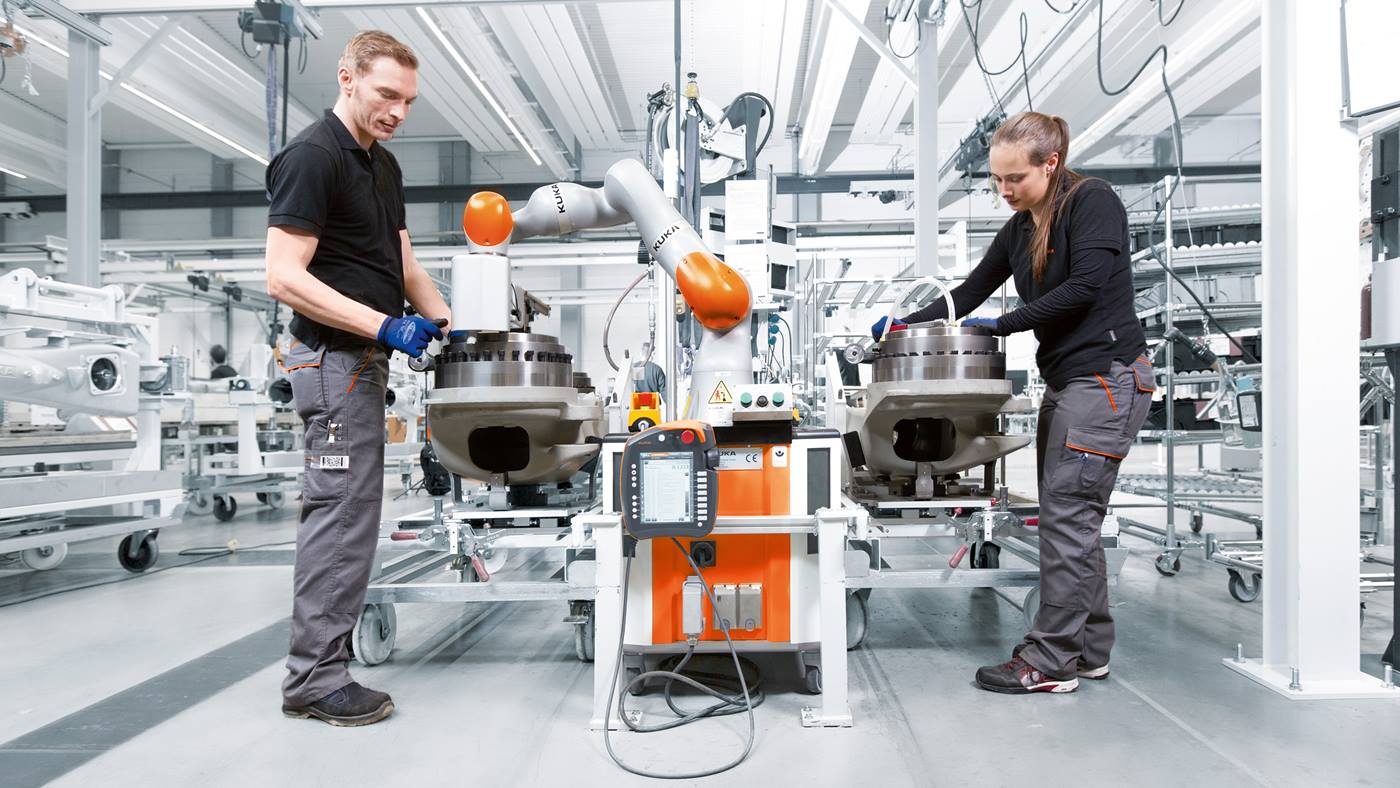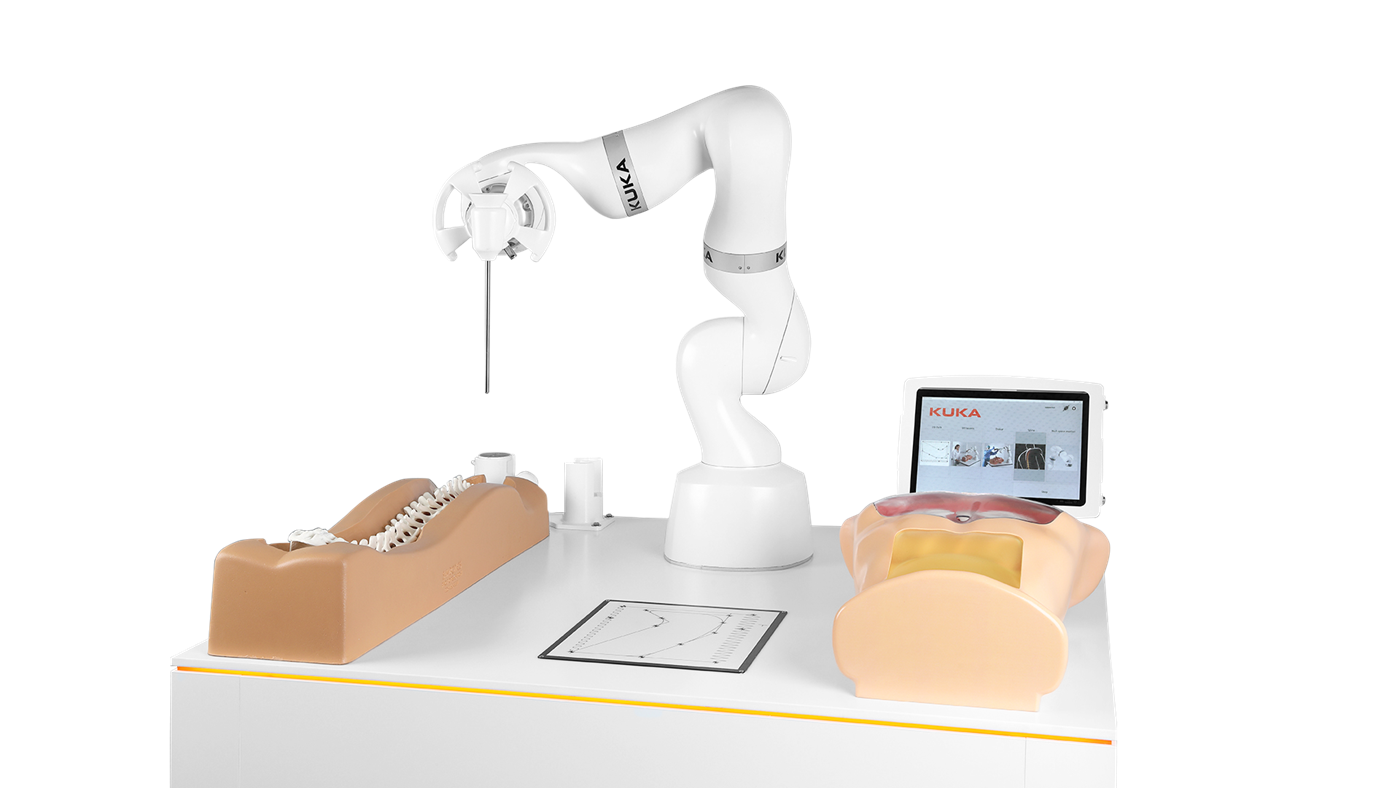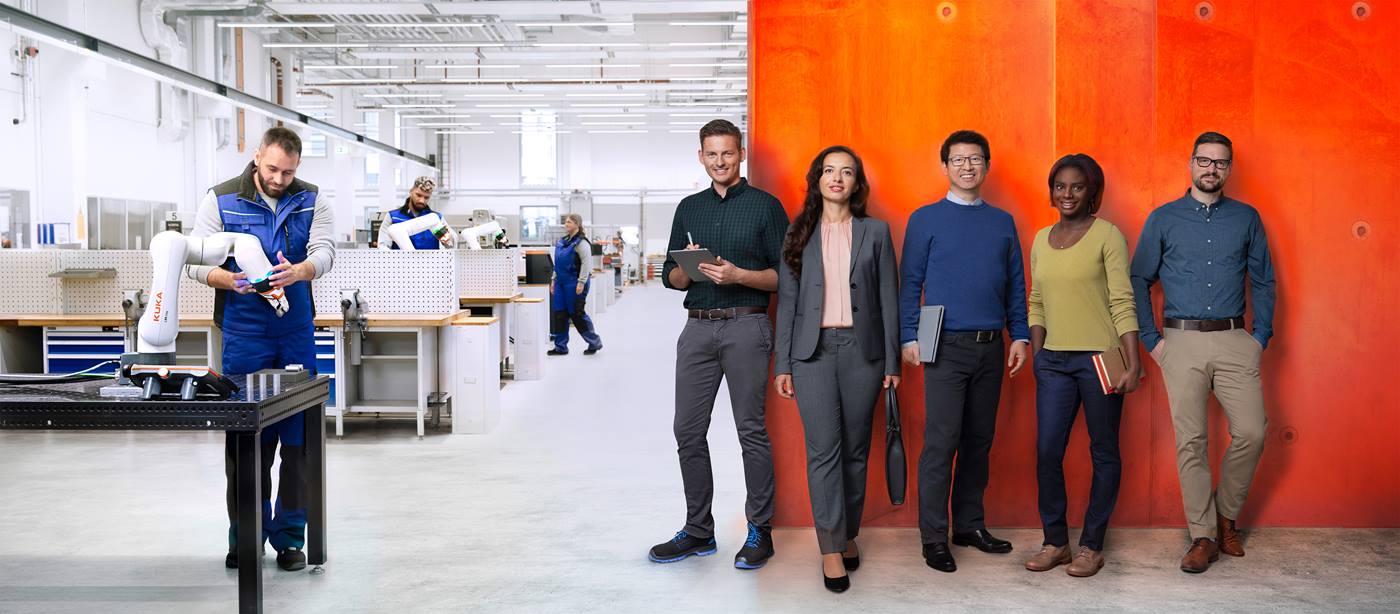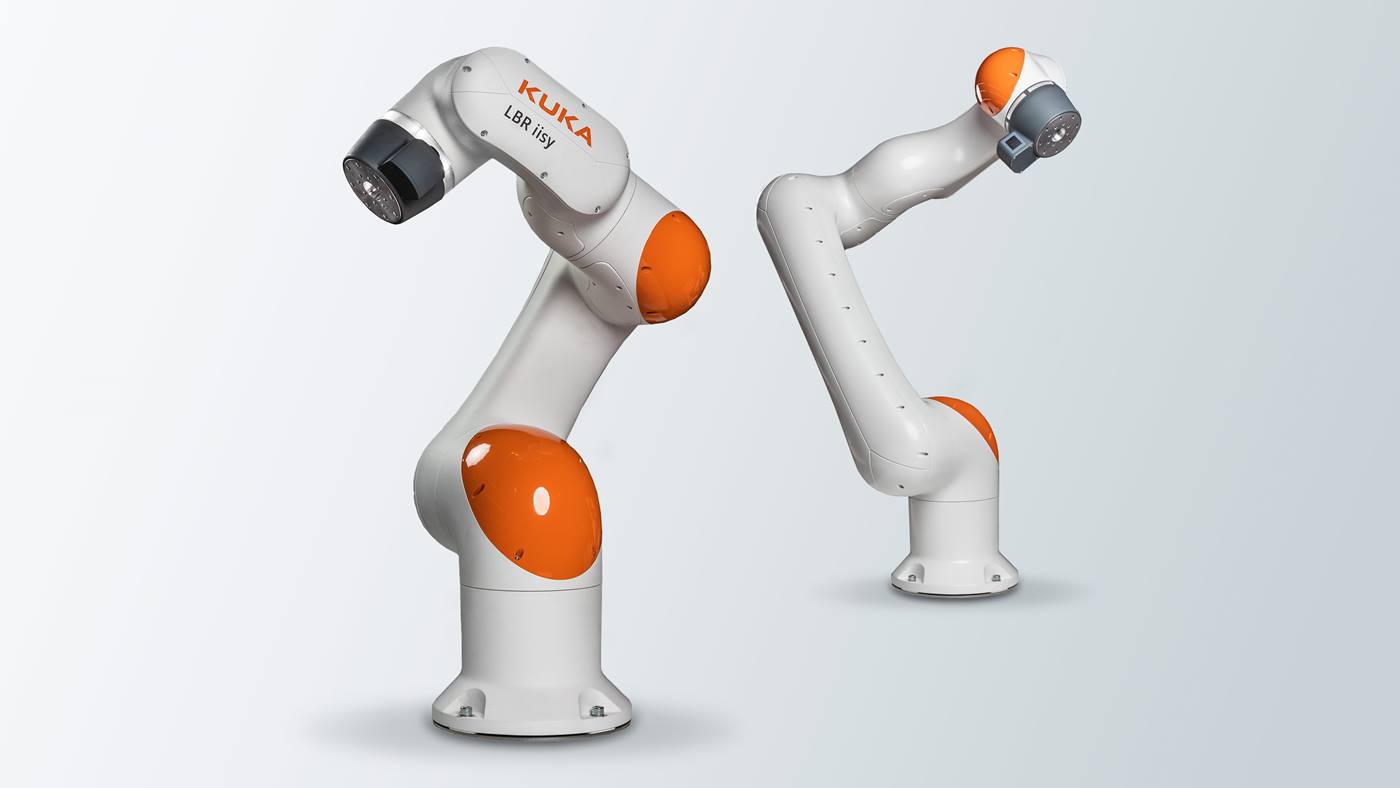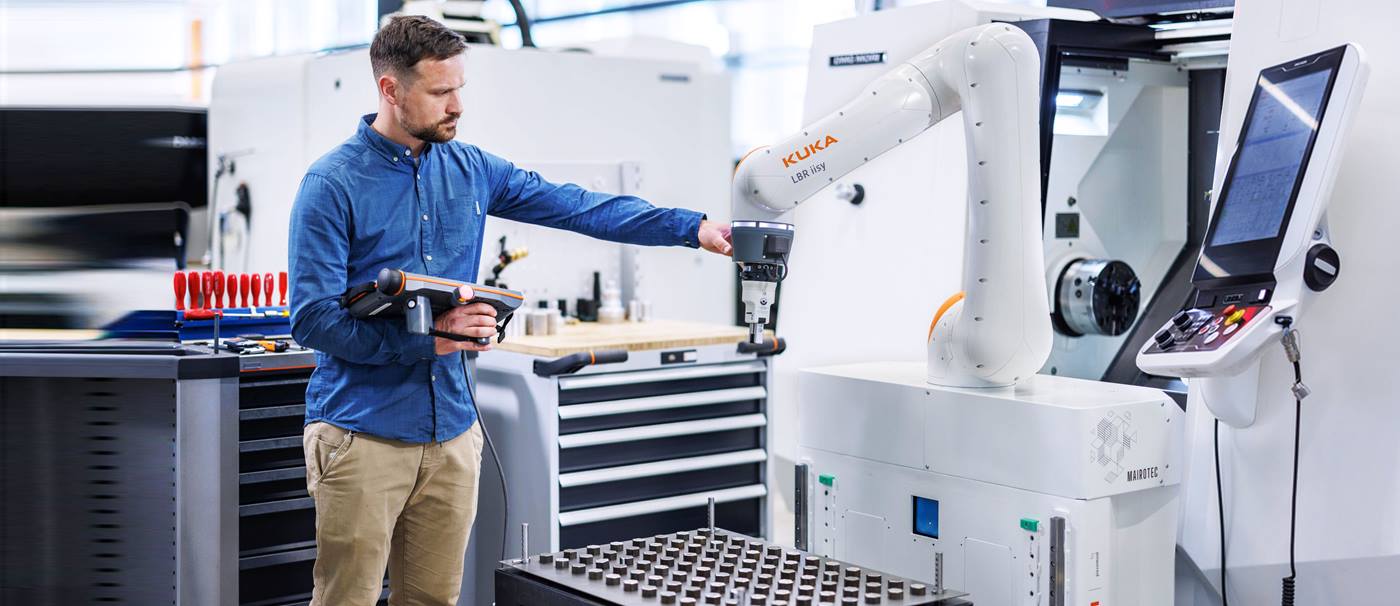Cobots: the status quo of flexible production
Flexible manufacturing in variable batch sizes with utmost efficiency – this is the challenge for the production of the future. To meet it, human-machine interaction will be required through all phases of robotic automation implementation – making it easier and faster to setup, install, commission, program, operate maintain and re-use robots in all applications.
In today’s modern factories, many production steps are already automated using machines. Human knowledge, intelligence, flexibility, creativity and sensitive touch ensure the smooth running and quality of production processes.
Alongside conventional industrial robots, collaborative, sensitive robots (“cobots”) can make it not only easier to commission and program them, but in many cases also work directly together with production workers, easing their workload. They can take on strenuous, ergonomically unfavorable and monotonous work, such as overhead work or the performance of repetitive tasks. Their floor space requirement is relatively low, as any safety equipment required can be designed to be extremely space-saving.


